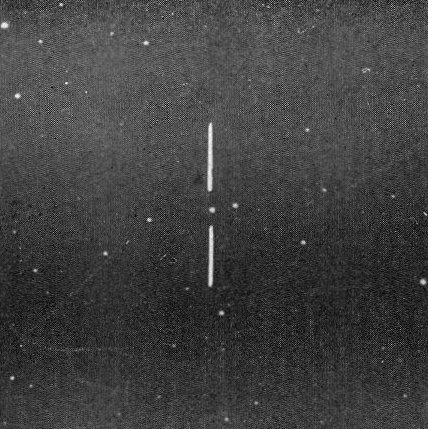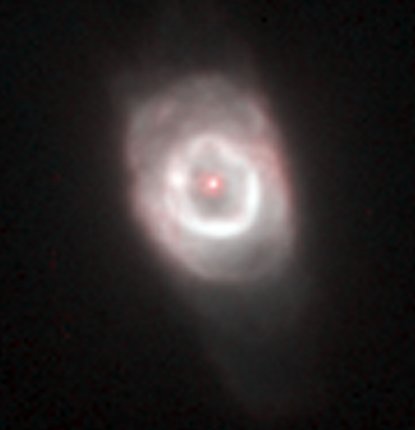NGC 6790
One of the classic "stellar" (not really, just very small) planetary nebulae (the other IC 4997), NGC 6741's disk is difficult to
discern through the telescope. Curtis says: "Indistinguishable
from a star on the Crossley [telescope] negatives [see the left-
hand image], but shown to have a minute disk with the 36-inch
refractor." The Hubble image at right reveals a tiered three-part
structure with a bright inner ring surrounded by a commonly-seen
outer shell that is encased in a larger halo that stretches out to
the lower right. Presumably, all Curtis could see was the inner
ring. Various measures of angular diameter run from 4.4 to 9.6
seconds of arc. We'll adopt 5 seconds here.
Well placed in Aquila near the celestial equator about 1.5 degrees south-
southwest of Delta Aquilae, the "best"
distance (from the object's interstellar dust absorption of about
1.75 magnitudes) appears to be around 4000 light years, which gives
the nebula a physical diameter of about a tenth of a light year,
small indeed.
From the central star's visual magnitude of 15.5, we obtain a
temperature of 76,000 Kelvin (other estimates stretching from
66,000 to 85,000 K. While the stellar luminosity is not well
constrained, it appears low (of the order of 1000 Suns), all the data showing that a low-mass
core is still in its heating phase and heading for a maximum of
around 100,000 Kelvin before it begins to cool and dim. Such a
view is consistent with no chemical enrichment by the progenitor giant star. Slowly expanding at
15 kilometers per second, the nebula will eventually dissipate,
leaving its new white
dwarf behind.
Left: Left: H. D. Curtis from Publications of the Lick Observatory,
Volume 13, Part III, 1918. Right: NASA and the Hubble Heritage
Team (STScI/AURA).



